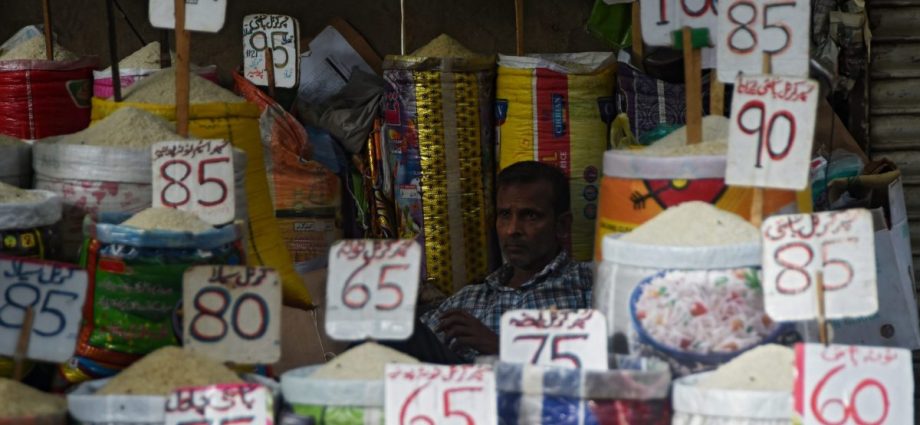
The tumultuous association between Pakistan and the International Monetary Fund (IMF) can be characterized as a series of unfortunate errors that have increasingly dire consequences.
For the past 60 years, Pakistan has turned to the IMF an astonishing 22 times, earning itself a dubious distinction. Each encounter with the IMF has been marked by a complex interplay of decisions and actions that have shaped Pakistan’s economic trajectory.
While Pakistan’s repeated appeals for assistance are a reflection of its deep-rooted economic challenges, its reluctance to comply fully with the IMF’s conditions for bailout packages has often led to rejection.
The IMF, as the lender of last resort, seeks to ensure that borrowing countries implement measures to address structural weaknesses, improve fiscal discipline, and promote sustainable economic growth. However, Pakistan’s history of non-compliance has made the IMF skeptical about providing fresh loans or restructuring existing ones.
Nevertheless, Pakistan has not been entirely dependent on the IMF for financial assistance. In the first five months of the fiscal year 2022-23, the country managed to secure financial support amounting to US$4.172 billion from other multilateral lenders such as the Asian Development Bank (ADB) and the Islamic Development Bank (IDB).
Additionally, Pakistan has received significant flood-relief aid exceeding $9 billion from various countries and organizations worldwide. These alternative sources of funding have provided some respite, but they are not a sustainable solution to the country’s deep-rooted economic challenges.
Rising debt burden
Pakistan’s borrowing patterns have contributed to the escalation of gross government debt, creating a significant burden on the economy. Additionally, the reluctance to reduce spending on subsidising electricity has further strained the nation’s financial standing.
These factors, combined with the country’s failure adequately to address budget deficits caused by excessive government expenditure, have undermined confidence in Pakistan’s ability to manage its financial affairs effectively.
Beyond its interactions with the IMF and other multilateral institutions, Pakistan’s debt obligations extend to the private sector. The country owes a substantial $7.8 billion in private debt, predominantly compoed of private bonds in Eurobonds and global Sukuk bonds.
Chinese financial institutions hold a significant portion of Pakistan’s foreign commercial loans. However, these commercial borrowings come with stringent conditions, including high interest rates and short repayment periods.
The recent three-year loan extension of $2.2 billion from the China Development Bank, with a 1.5-percentage-point increase over the Shanghai Interbank Offered Rate (SHIBOR), exemplifies these conditions.
Furthermore, the private-sector balance sheet is under tremendous pressure, with external debt amounting to 5,121 billion Pakistani rupees ($17.9 billion) as of March.
Electricity crises
Pakistan’s power sector has been a major source of financial strain. The accumulation of public debt in this sector due to subsidies and unpaid bills had reached an alarming $14.9 trillion by the end of 2022. In response, Pakistan introduced a circular debt management plan (CDMP) aimed at addressing the issue.
However, the IMF has criticized the country’s reluctance to raise electricity tariffs within the recommended range of 11-12.50 rupees per unit, severely impacting the country’s efforts to secure IMF assistance.
Pakistan’s struggle to secure IMF assistance is compounded by the pervasive issue of corruption. Bribery, embezzlement, and other illicit practices have deeply penetrated public institutions, eroding trust in the government and hindering effective governance.
The consequences of corruption extend beyond the domestic sphere, as it distorts market mechanisms, perpetuates resource inequality, and discourages entrepreneurial activity. Foreign investments and international cooperation are negatively affected, further exacerbating Pakistan’s challenges in securing IMF bailouts.
Looking ahead, Pakistan faces the daunting prospect of another financial crisis. The country’s debt cycle is expected to persist even after the conclusion of the Extended Fund Facility (EEF) program.
With dwindling foreign-exchange reserves, Pakistan may need to seek additional loans from institutions such as the World Bank and the ADB. This could potentially lead to another IMF program aimed at addressing inflationary pressures and restoring stability to the economy.
Pakistan’s troubled relationship with the IMF is a culmination of repeated mistakes and missed opportunities. While the country has managed to secure alternative sources of funding, it faces significant challenges in addressing its deep-rooted economic issues.
Tackling corruption, implementing sustainable fiscal measures, and fostering an environment conducive to economic growth are crucial steps for Pakistan’s long-term financial stability and independence.
A more detailed article by this author can be found here: Debt ad Infinitum: Pakistan’s Macroeconomic Catastrophe.

